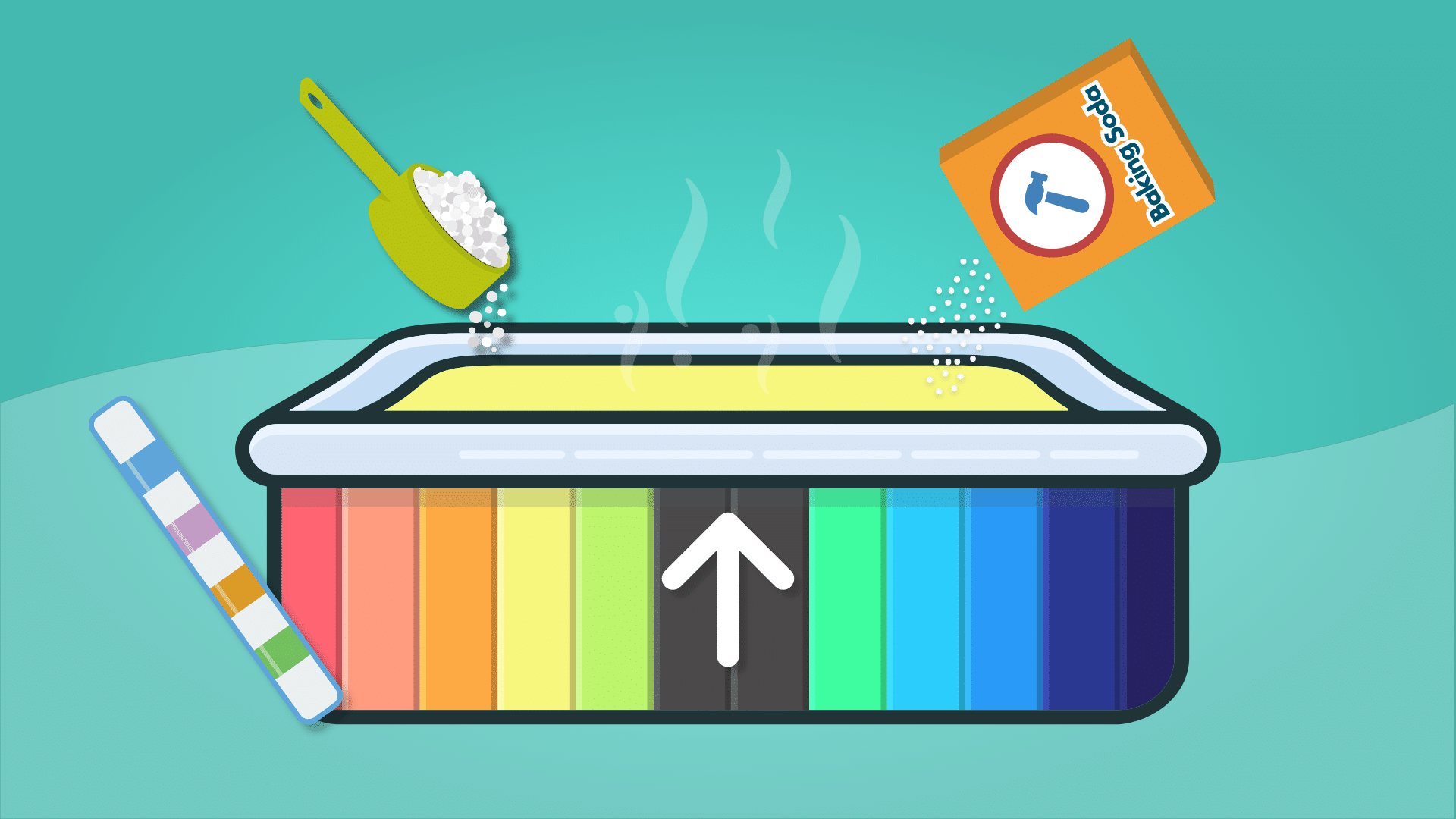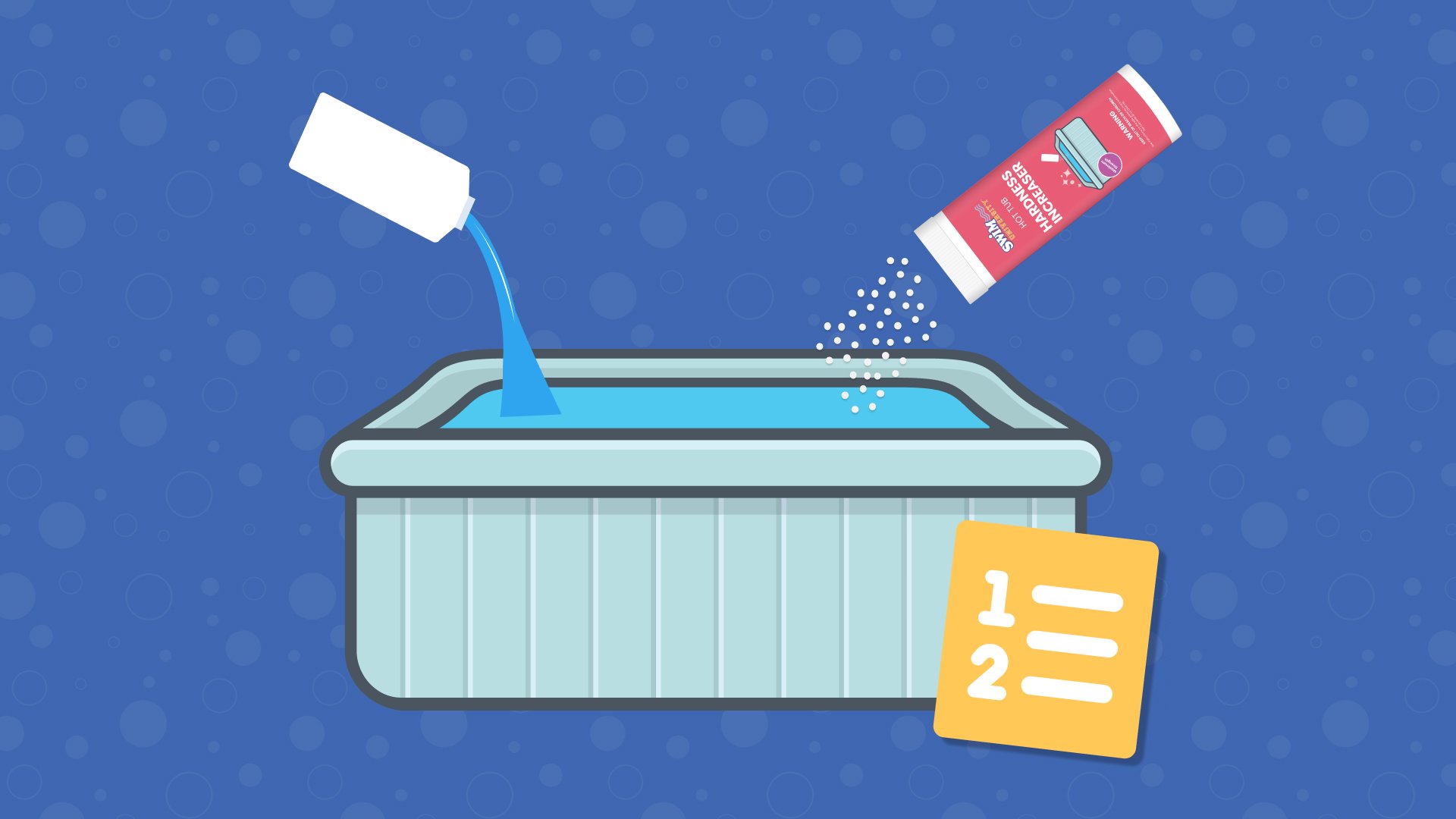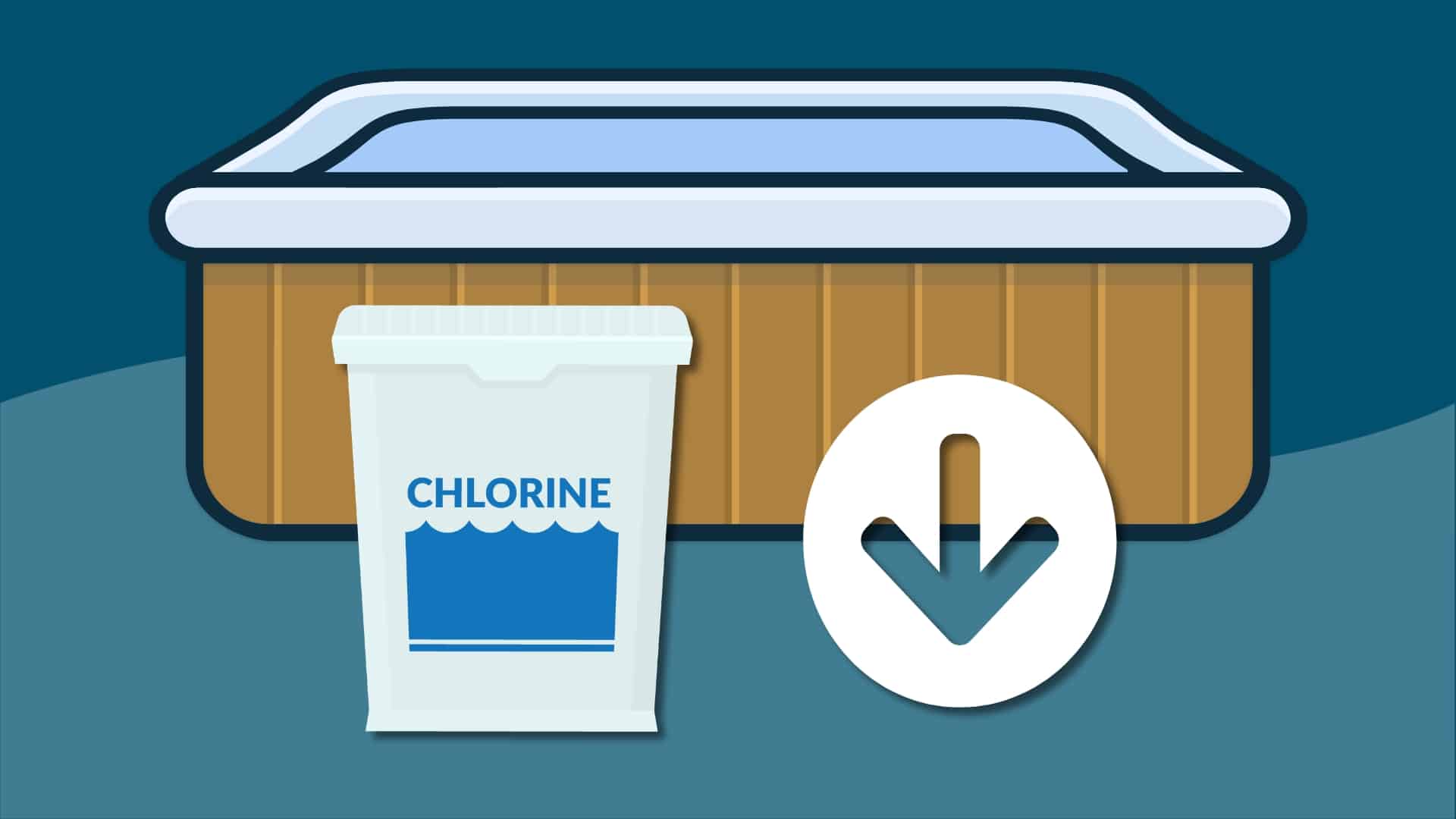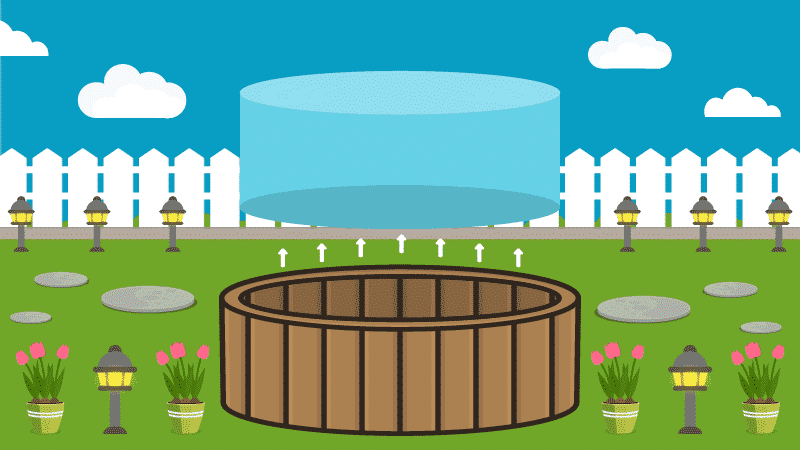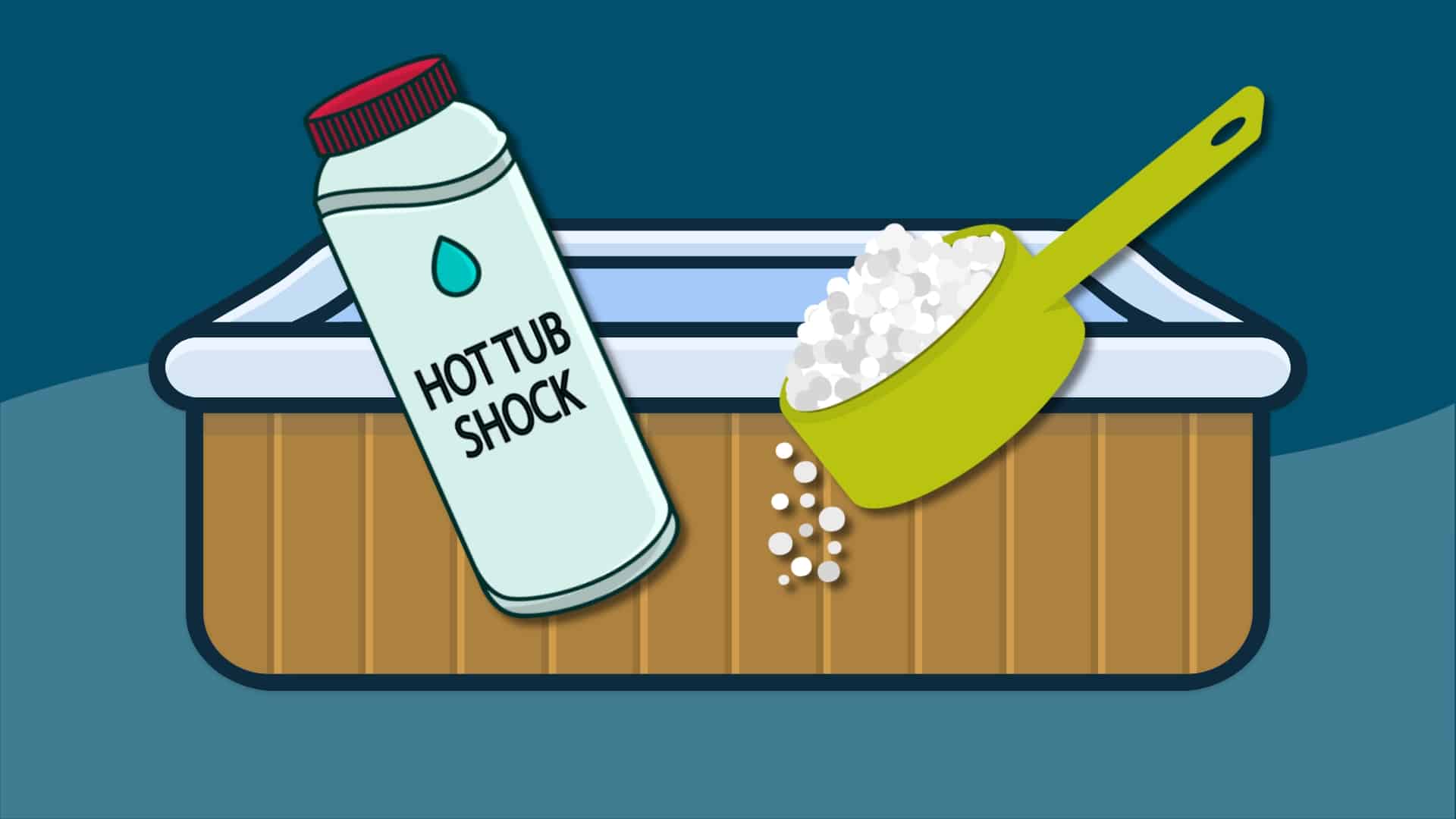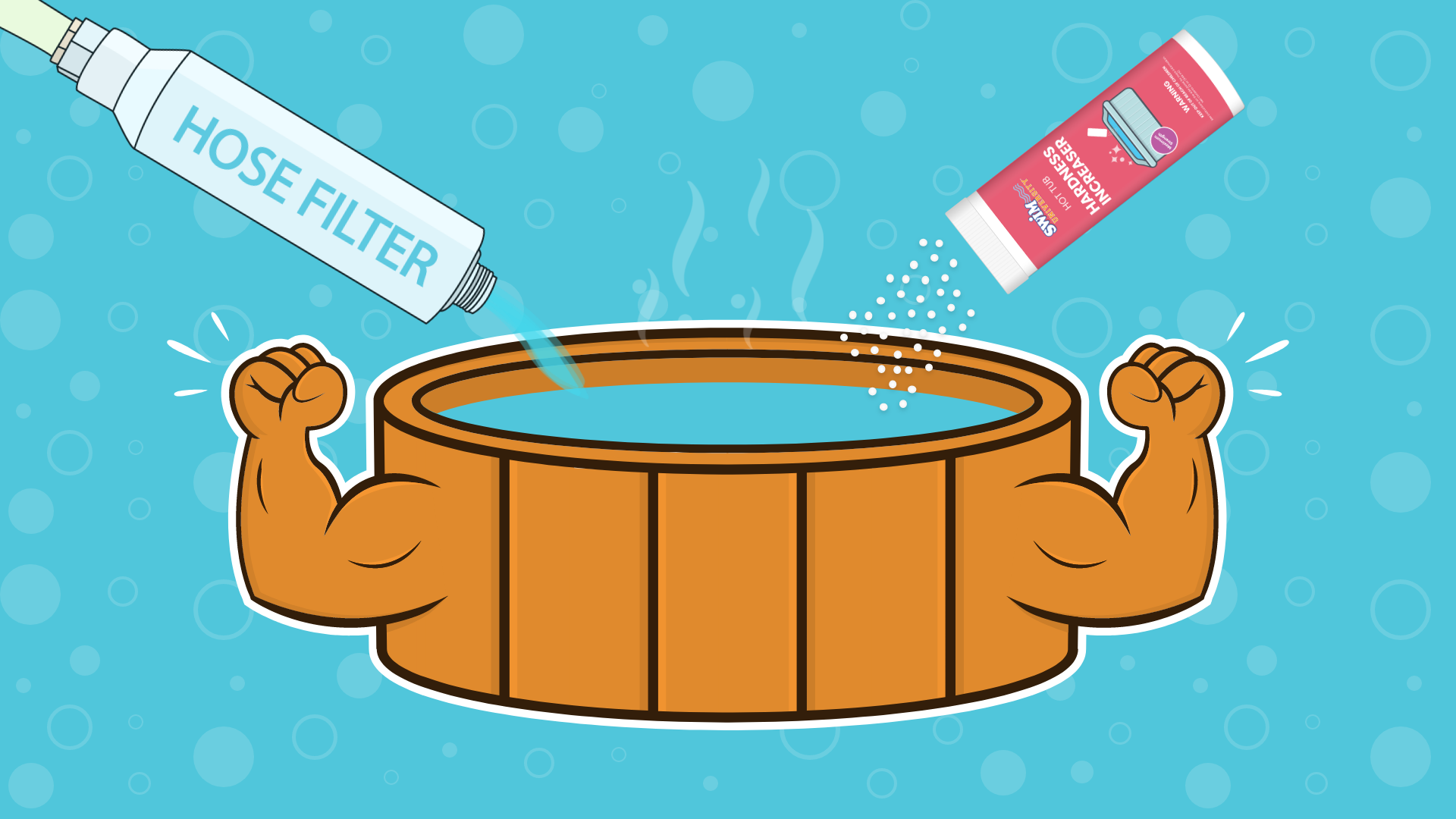How to Lower Alkalinity in a Hot Tub
If the alkalinity in your hot tub or swim spa is high, it can cause cloudy water and reduce the effectiveness of your sanitizer (chlorine, bromine, etc.). So, to lower alkalinity in your hot tub, add
But why is your alkalinity high in the first place? Let’s start there and solve the problem from the beginning.
Learn how to keep your hot tub clear while saving money so you can enjoy more soaking time without big costs. The Hot Tub Handbook covers every type of hot tub on earth.
What is Alkalinity in Your Hot Tub?
What’s the difference between your water’s pH and alkalinity? First, we have to understand that pH (potential of hydrogen) is the measurement of how acidic or basic your hot tub water is. Here’s an image to illustrate the pH scale.
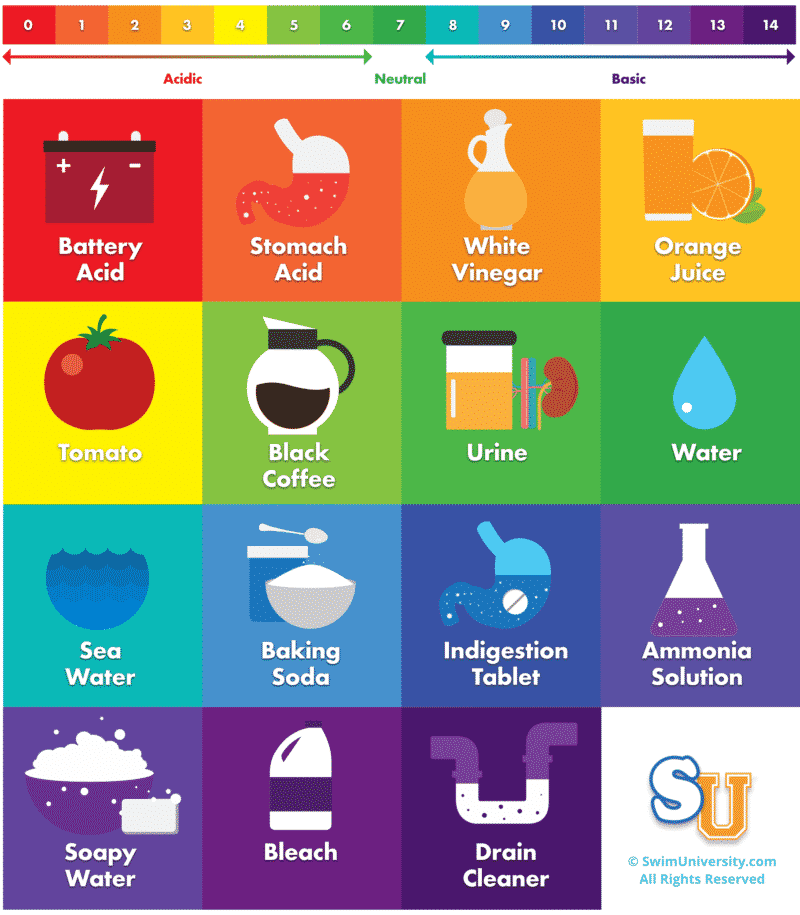
Our goal is to keep the pH level balanced between the ideal range of 7.4 and 7.6. Not too acidic and not too basic.
Alkalinity, on the other hand, is the capacity of water to resist acidification (thanks Wikipedia!). But we like to think of alkalinity as pH’s bodyguard.
Hot tub pH is volatile. Any little thing that interacts with your water can cause drastic pH fluctuations. For example, when you soak in your hot tub, it could lower pH. And shocking could cause high pH. Low pH can cause corrosion. A high pH level causes scaling or cloudy water.
But when you have the right amount of alkalinity, this will take the hit before affecting your pH.
So, without alkalinity, your water’s ability to maintain pH balance would be all over the place. Alkalinity and pH are related, but they are not the same.
Unlike pH, total alkalinity is measured in parts per million or ppm for short. Most resources tell you to keep it between 80-120 ppm. However, we recommend keeping your hot tub alkalinity level between 100-150 ppm to give yourself more room. We have an article all about hot tub water chemistry if you’re interested in learning more.
Tests for 7 important chemistries in seconds: Total Hardness, Total Chlorine, Total Bromine, Free Chlorine, pH, Total Alkalinity, and Cyanuric Acid.
NOTE: If you’re dealing with low alkalinity, we have a guide on how to raise alkalinity in a hot tub here.
What Causes High Alkalinity in a Hot Tub?
To be fair, high alkalinity is not a common issue in hot tubs. Mainly because most owners drain and clean their hot tubs every 3-4 months to keep things from building up.
That said, there are a few main causes of high alkalinity in a hot tub:
- Too Many Chemicals: You could be adding too many chemicals to your hot tub, which can increase your Total Dissolved Solids or TDS. Drain and clean your hot tub every 3-4 months to avoid this issue.
- Sweat, Lotions, and Other Gross Body Stuff: YOU or your family and friends could be raising the pH with all your body lotions, sunblocks, perfumes, hair gel, etc. Shower before you soak!
- Your Water Source: You may live in an area where your local water supplier has a high alkalinity reading. Ask your township or county or local water district for a water reading. Most places will provide one.
- Human Error: You could have accidentally had a heavy hand in adding Alkalinity Increaser or baking soda. Whoops!
What Happens if Alkalinity is Too High in Hot Tub?
The main thing that can happen is it renders your sanitizer (chlorine, bromine, etc.) useless. That can cause green water and bacteria to grow, making the hot tub unsafe to soak in. Secondly, it can cause a calcium scale build-up, which will make your hot tub work twice as hard to heat up.
All of this puts hot tub soakers at risk for skin issues like hot tub folliculitis. Plus, it puts you (the hot tub owner) at risk for empty wallet syndrome by replacing heaters and adding more sanitizing chemicals.
How Do I Lower The Alkalinity in My Hot Tub?
The easiest way to lower alkalinity in your hot tub is by adding a
Before you add
- Test the hot tub water. Use a test strip (recommended) or a liquid test kit to find out the current alkalinity reading in your hot tub and if you even need to lower it.
- Add
pH Decreaser (sodium bisulfate). For example, if your hot tub has 1,000 gallons of water, use about 3 ounces (85 grams) to lower the alkalinity by 10 ppm. Sprinkle (or “broadcast”) the powder around the surface of your hot tub while it’s running to help it mix in. - Retest the water. After 24 hours, test the water again and readjust if needed.
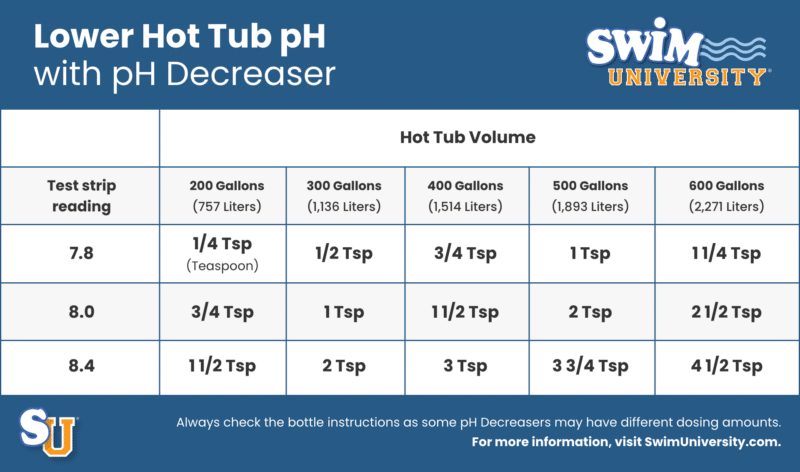
Lower your hot tub pH with a pH decreaser. High pH can damage your hot tub equipment, cause cloudy water, and irritate eyes and skin.
Does Vinegar Lower Alkalinity in a Hot Tub?
No. White vinegar (or any other type of vinegar) does not lower alkalinity. It will only lower the pH in your hot tub.
Final Tips to Control Hot Tub Alkalinity
Hopefully, that answered a lot of your questions about lowering hot tub alkalinity and how to prevent it from being so high in the first place. Here are a few more tips for dealing with both pH and alkalinity:
- After adding any chemicals to your hot tub, allow your water to circulate for at least 5 to 15 minutes before retesting. Or better yet, retest the next day for more accurate readings.
- You can keep alkalinity between 80 and 120 ppm, but we recommend 100 to 150 ppm to give the alkalinity more room to come down before having to adjust again.
- For the most accurate water test, collect a water sample into a clean cup and test it after it has cooled to room temperature. And use a test strip because they’re fast, easy and close enough. But liquid tests more accurate than test strips.
- Never mix chemicals together. Add them one at a time and at least 15 minutes apart with the cover off.
- Add aeration to the water. Using your air jets or a built-in fountain will help control the pH without affecting the alkalinity reading. Adding air increases oxygen and decreases carbon dioxide, which raises pH without raising alkalinity.
- Change your spa water at least every 3 to 4 months.
Frequently Asked Questions About Lowering The Alkalinity of Your Hot Tub
I found the questions hot tub owners ask the most about lower alkalinity and answered them here.
Will baking soda lower alkalinity in a hot tub?
No. Baking soda raises alkalinity because the main active ingredient is sodium bicarbonate. If you’re looking to lower it, reach for a
Will shocking pool lower alkalinity?
Shocking your pool usually doesn’t affect alkalinity much. But chlorine shock can actually raise your pH. That’s why I recommend using a non-chlorine shock for chlorine and bromine hot tubs
Will alkalinity decrease on its own?
Yes. Over time, as you use the hot tub, the alkalinity level could decrease. That said, it can also increase. If your alkalinity is high, I wouldn’t wait. I would add
Is it safe to soak in a hot tub if alkalinity is high?
Soaking in high alkalinity water won’t harm you, but it can be uncomfortable on your skin. I would not soak in hot tub water that’s got a high alkalinity reading. It can also make the water cloudy and potentially harm your hot tub components.
How do I lower alkalinity without lowering pH?
Lowering alkalinity without affecting pH is tricky. You’ll need to add a
Can I use muriatic acid for low alkalinity in a hot tub?
I would NOT do that. While we sometimes recommend adding it to a pool, it’s too much to add to a hot tub. I recommend just sticking to using a
3 Ways We Can Help With Your Hot Tub
- Hot Tub Cheat Sheets (Free): Easy-to-use guides to help you keep your hot tub water balanced and sanitized.
- The Hot Tub Handbook: An illustrated guide to DIY hot tub care, including water chemistry, maintenance, troubleshooting, and more.
- The Hot Tub Care Course. You’ll get step-by-step videos and a step-by-step downloadable guide with everything you need to know about hot tub maintenance.









